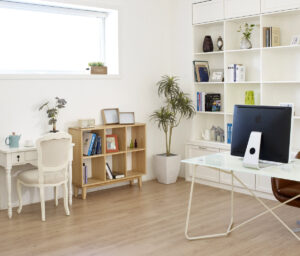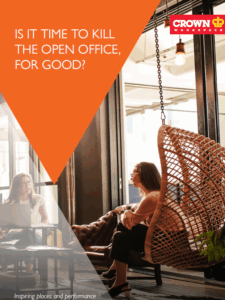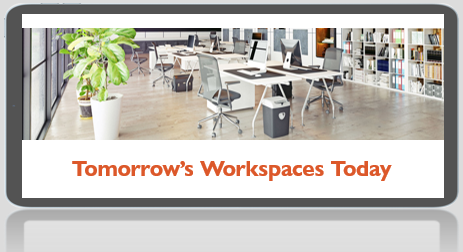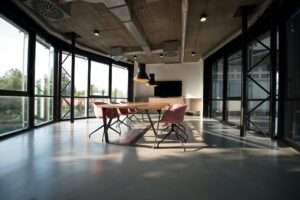Are remote setups beating the office in terms of tech and comfort?

In our recent article, “Is it time for offices to get personal again?” we discussed the importance of personal workspace environments for productivity and morale. There’s another aspect office designers and facilities managers need to address urgently: technology.
Modern workplaces face a particularly post-COVID conundrum: Employees finding their home setup better equipped, and more comfortable, than their office. This mismatch has become clear in our recent report, “Is it time to kill the open office, for good?” where we surveyed over 1,000 office workers and 200 facilities managers about workplace conditions, technology, and productivity post COVID.
Nearly half (48 percent) of respondents said improved technology is their main reason for spending more time in the office. 36 percent mentioned that a second monitor significantly boosts their productivity (among other equipment). Yet we all know from experience many employees often find these tools easier to access at home than at work, after all you don’t need to fill out paperwork to simply buy a second monitor or wireless keyboard for yourself. . In some UAE organisations, procurement procedures and IT sign-off processes can slow down even simple upgrades—making personal tech setups feel more agile by comparison.
If employees regularly find better tools and connectivity at home, it seems natural they’d question why they should commute in the first place. Even in the UAE—where in-person working has traditionally been the norm—organisations are increasingly investing in flexible work policies and rethinking how office spaces can compete with well-equipped home setups.
Why do home offices feel superior anyway?
As we mentioned in our initial article, when at home, people often have quieter surroundings, personalized setups, and technology they themselves have purchased. This is a long-running trend outside of hardware: enterprise software often lags behind consumer software in terms of functionality and intuitive UXs. In the UAE, employees often adopt consumer tools like WhatsApp or Google Docs for their simplicity—well before official IT channels roll out enterprise alternatives. Consider how long it took for business instant messaging platforms to catch up with user expectations set by consumer apps.
Our survey also found that 45 percent of office workers feel more productive at the office—but, and this is the key point, that productivity only happens under certain conditions. What do we mean by that? Good equipment, quiet areas, and comfortable furniture were key reasons mentioned by employees in our report.
This rings true across many UAE workplaces—particularly in fast-growing industries like tech, finance, and professional services—where open-plan layouts and mixed-use spaces are common. Without the right infrastructure, creating quiet, focus-friendly zones can be difficult.
Harvard Business Review’s 2019 “The Truth About Open Offices” (one of the most magisterial treatments of the history of the open office concept) also mentions this. Offices falling behind technologically risks pushing employees toward digital-only interactions with their colleagues because the physical office environment can’t adequately serve their needs.
Technology gaps impact office attendance
There’s a clear figure in our survey that really stands out in all of this.
91 percent of respondents said they’d spend more time at the office “if technology and workspace improvements were made”. In other words, a lack of investment means employees are simply not as motivated to come in.
In practical terms, this means investing in better connectivity, additional monitors, video conferencing areas, noise-canceling headsets, and smart meeting tools. In UAE offices, this also includes supporting a multilingual, tech-diverse workforce across industries like finance, media, logistics, and tech—where expectations around office equipment are evolving quickly.
How can this gap be closed?
Two words: targeted investment. This includes ensuring reliable, high-speed internet connectivity, easy device integration, and ergonomic setups for tasks where this is needed.
Gensler’s Workplace Surveys, the largest survey of office workers out there, state quite explicitly that companies which prioritize technology, comfort and privacy regularly report consistently higher employee satisfaction.
The four areas you need to pay attention to
- Upgrade connectivity: High-speed connectivity and network reliability. What’s the point of being in an office where the internet regularly goes down?
- Ergonomic setups: Second monitors, adjustable desks, as well as low-cost accessories like wrist rests for keyboards.
- Meeting solutions for a new era: Well-equipped video conferencing rooms that allow for quick, easy meetings, combined with quiet areas for when your staff need to “lock in”.
- Continuous employee feedback: Regularly ask staff about their evolving technology needs and respond accordingly. This is the most important step, so don’t treat it as a piece of admin.
 Download our full report, “Is it time to kill the open office, for good?” to learn more and get practical strategies for making your workplace a place where people actually want to come to every week.
Download our full report, “Is it time to kill the open office, for good?” to learn more and get practical strategies for making your workplace a place where people actually want to come to every week.
Related stories
Around half of all Facilities Managers plan to downsize their office space in the next three years. Our recent survey, conducted across the U.K., U.S., Singapore, India, New Zealand, and Hong Kong, interviewed over one thousand office workers and facilities managers to explore changing office habits and attitudes.
The open office was sold as the modern solution to just about any workplace problem for decades now: siloed workers? Open them up (literally) to collaboration. Bad communication? Put everyone in a big room. Worried about productivity? Create a vantage point. And so, walls came down, spaces opened up, and collaboration was supposed to flourish. […]
Six countries, 1200 respondents: Our new 2025 research survey suggests open-office orthodoxy is making the post-COVID workplace less palatable than ever. What can be done about this?





























